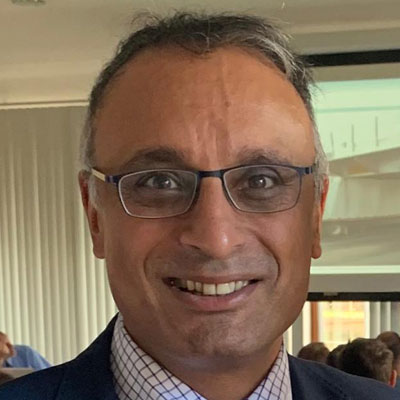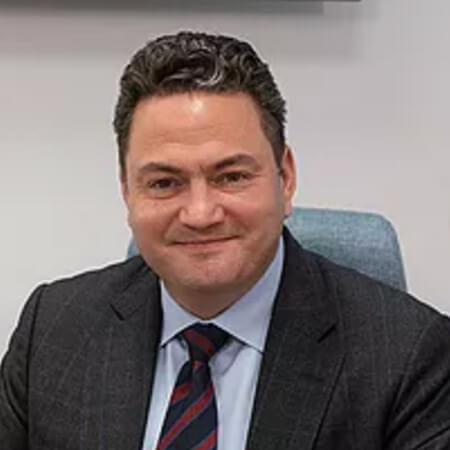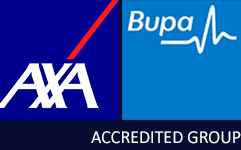Anterior Cruciate Ligament (ACL) Injury
What are ACL Injuries?
Anterior cruciate ligament (ACL) sprains and tears are among the most common knee injuries and can occur in children and adults.
Athletes who participate in skiing and sports such as football, rugby, netball and basketball — where they do a lot of running, jumping and quickly switch directions — are more likely to sustain serious ACL injuries. Some of these injuries will require surgical treatment.
About half of all ACL injuries occur in combination with other knee injuries, such as meniscus tears or damage to other structures of the knee such as articular cartilage and other ligaments.
Understanding the anatomy of the knee
Bones
Your knee joint consist of three bones:
- Femur (thighbone)
- Tibia (shinbone)
- Patella (kneecap)
The kneecap is positioned in front of the knee joint to provide some protection.
Ligaments
Collateral ligaments are on the side of the knee — the medial ligament (MCL) is on the inside of your knee; the lateral ligament (LCL) is on the outside. These ligaments control the sideways motion of the knee.
Cruciate ligaments run diagonally inside the middle of the knee, forming an “X”, with the anterior cruciate ligament (ACL) in the front part of the knee, and the posterior cruciate ligament (PCL) in the back. These ligaments control the back and forth motion of the knee. The ACL helps to keep the knee joint stable by
preventing the top of the tibia sliding forward on the bottom of the femur.
Types of ACL injuries
ACL injuries can vary in severity.
- Sprain: The ligament has sustained mild damage and been slightly stretched but can still keep the knee joint stable.
- Partial Tear: The ACL is stretched and becomes loose. It is rare.
- Complete tear or Rupture: The ACL is split into two pieces and the knee is unstable.
- Avulsion: The ACL is pulled off the bone at the femur or on the tibia where it often pulls off with some bone (this is called a tibial spine avulsion)
Causes of ACL injury
The typical way this happens is when a skier lands badly and his knee twists; another very common way of injuring the ACL is when a footballer or rugby player has all his weight on one foot – say, whilst running – and his leg pivots, this again twists the knee and can tear (“rupture”) the ACL.
ACL injuries can be caused by
- Jumping or landing incorrectly
- Stopping suddenly while running
- Changing directions rapidly while running
- Contact injuries, such as a football tackle
- Repetitive impact activity — such as jumping, running, twisting or pivoting.
Signs and symptoms of ACL injury
If you injure your ACL, you may:
- Hear a popping sound
- Feel the knee has given way
- Feel immediate pain
- Experience immediate swelling after the injury
- Be unable to continue playing immediately after the injury
- Experience stiffness and lose range of motion
- Experience joint tenderness
Testing and diagnosis
If you suspect you have sustained an ACL injury, you should be evaluated by an experienced orthopaedic surgeon.
At Surrey Orthopaedic Clinic, ACL injuries are treated only by dedicated sports surgeons who only specialise in diagnosing and treating knee injuries. Our expert doctors will perform a physical examination of your child, specifically addressing all structures of the injured knee, and comparing them to the non-injured knee.
We will assess your pain, learn about your medical history and as necessary perform diagnostic imaging such as X-rays and MRIs to help diagnose your condition and the severity of the injury. Then, we will work with you to develop an individualised treatment plan.
ACL Injury Treatment
Treatment will depend on a number of factors, including your age, the severity of the injury, and sports and lifestyle goals long-term.
For example, an elite young athlete will likely require surgery to return to pivoting sports safely; while non-surgical treatment may be recommended for patients who do not engage in pivoting sports or are less seriously injured with no instability.
Non-surgical options
Options include:
- Activity modification, which includes avoiding sports such as soccer and football, which involve “cutting” — running with jumping, pivoting, and twisting
- Immobilization with a brace may be recommended to help protect the knee from instability. Specific ACL braces can allow some return to sports and skiing.
- Physical therapy and rehabilitation may be started after swelling has decreased; specific exercises will strengthen the quadriceps and hamstring muscles and help restore knee function and stability.
Surgical options
A torn ACL will not heal without surgery, but surgery is not appropriate for everyone.
ACL reconstruction surgery is recommended for:
- Individuals who have sustained a partial or complete ACL injury with ongoing instability.
- Individuals who want to continue to be involved in competitive sports that require cutting and twisting (i.e. football, soccer, basketball)
ACL reconstruction is typically performed with key-hole surgery called arthroscopy, which is less invasive than open surgery and allows patients to recover more quickly. During this procedure, a skilled orthopaedic surgeon will make small incisions that create minimal trauma to the knee.
Because most ACL tears cannot simply be stitched back together, orthopaedic surgeons must recreate the ligament using a tissue graft.
Tissue grafts to create a new ACL may be obtained from:
- The patient’s patellar tendon (between the kneecap and shinbone)
- The patient’s hamstring tendon (on the back of the thigh)
- The patient’s quadriceps tendon (between the kneecap and thigh)
- An allograft (donated from another person) tissue transplant
- Each graft source has advantages and disadvantages. Talk to your surgeon to determine which option is best for you.
Most ACL reconstruction procedures are not done right away after injury. Instead, surgeons prefer to wait until swelling has decreased and joint motion has returned. If an ACL reconstruction is performed too early, there is a significantly increased risk of stiffness and loss of motion due to scar tissue forming in the joint – this is called arthrofibrosis.
What can I expect on the day of ACL surgery?
Unlike the NHS, where we supervise but may not perform every operation on every patient, privately we see all our patients and if anyone needs surgery we perform the procedure personally. On the day of your operation you will be met at reception by hospital staff and taken to your own room. Surgery typically lasts 60 minutes. After your operation you will feel drowsy but will feel little or no pain. We will see that you are well in the recovery suite of the operating theatre and in your room later. We are happy to telephone your partner or next of kin to let them know that all went well.
Complications of ACL surgery
All surgical procedures have the potential for complications.
The major potential problems during surgery include additional procedures to treat damaged structures, using bigger scars or alternative graft options from the other unaffected leg, as well as bleeding or small nerve damage. The risk of dying in the operating theatre under anaesthetic is extremely small. For a healthy person having planned surgery, around 1 person may die for every 100,000 general anaesthetics given.
The major potential problems after surgery include graft rupture (between 5 and 10%) and infection (less than 1%). Other potential problems after any knee surgery include stiffness and persistent swelling, a small patch of numbness on the skin and bleeding. Numbness around the scars on the front part of the knee is common as the nerves that supply sensation to the skin crisscross around the front of the knee. This can be quite disconcerting for a few months and some residual area of reduced sensation may persist in the long term. Usually this does not affect the function of the leg.
As you might imagine, training and experience are very important in ensuring a good outcome for patients so we are delighted to say that we personally perform over 300 of these procedures per year including many revision cases for failed surgery from other centres as well as a large number of paediatric cases. We are recognised specialists in this operation and have pioneered new reconstruction techniques. This is reflected in both our results as well as our roles in training junior surgeons and fellow consultants in how to carry out these procedures.
ACL Follow-up care
Rehabilitation and physiotherapy are vital for recovery after an ACL injury and after Reconstruction surgery. Physiotherapy will help you regain strength and motion in your knee.
After surgery, rehabilitation will initially focus on returning motion to the knee followed by a strengthening program designed to protect the new ligament by gradually increasing stress on the ligament. Finally, you will participate in a customised program designed to optimize return to your chosen sport.
Rehabilitation and recovery after ACL injury takes time. It’s important to have realistic expectations about recovery. It may be 12 months or more – depending on strength and agility training — before an athlete can return to sports after surgery.
ADDITIONAL INFORMATION
Our Orthopaedic Knee Surgeons






